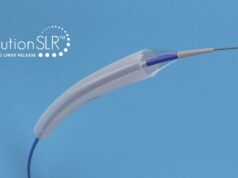Patients suffering from severe mitral regurgitation should be carefully screened and counselled before undergoing transcatheter edge-to-edge mitral repair (TEER), as data show that as many as 95% of patients who needed surgery after failed TEER could not have their valves repaired and needed mitral valve replacement to resolve the issue.
This is according to an analysis of the Society of Thoracic Surgeons (STS) Adult Cardiac Surgery Database, presented at the American Association for Thoracic Surgery 101st Annual Meeting (AATS 2021, 30 April – 2 May, virtual) and published in the Journal of the American College of Cardiology (JACC).
“The fact that TEER takes surgical repair off the table as an option for patients makes it essential that we have a very clear understanding of which patients will benefit. This finding has important implications for treatment choice in lower-risk patients with degenerative disease,” said Joanna Chikwe (chair of the Department of Cardiac Surgery in the Smidt Heart Institute at Cedars-Sinai, Los Angeles, USA) who presented the findings at AATS 2021. “These findings should inform patient consent for TEER, design of clinical trials, and clinical performance measures.”
The study evaluated national outcomes of mitral surgery after TEER, using a primary outcome of 30-day or in-hospital mortality. Researchers identified 463 patients from the STS database having undergone mitral surgery after TEER. The patients were found to have a median age of 76 years (interquartile range (IQR) 67‒81 years), median left ventricular ejection fraction 57% (IQR 48‒62%), and 177 (38.2%) patients had degenerative disease.
Major concomitant cardiac surgery was performed in 137 (29.4%) patients, Chikwe and colleagues reported. In patients undergoing isolated mitral surgery median STS predicted mortality was 6.5% (IQR 3.9‒10.5%), observed mortality was 10.2% (n=23/225) and the ratio of observed to expected mortality was 1.2 (95% CI 0.8‒1.9).
Predictors of mortality included urgent surgery (odds ratio (OR) 2.4, 95% confidence interval (CI) 1.3-4.6), non-degenerative/unknown aetiology (OR 2.2, 95% CI 1.1-4.5), creatinine >2.0mg/dl (OR 3.8, 95% CI 1.9-7.9) and age >80 (OR 2.1, 95% CI 1.1-4.4). In a volume outcomes analysis in an expanded cohort of 591 patients at 227 hospitals, operative mortality was 2.6% (n=2/76) in four centres that performed >10 cases versus 12.4% (n= 64/515) in centres performing fewer (p=0.01). The surgical repair rate after failed TEER was 4.8% (n=22), and 6.8% (n=12) in degenerative disease.
Writing in JACC, Chikwe and colleagues note that current consensus guidelines recommend TEER is performed for prohibitive and high-risk patients with severe symptomatic primary mitral regurgitation, and for a select subset of patients with chronic severe secondary mitral regurgitation, systolic dysfunction and persistent severe symptoms while on optimal goal directed medical therapy.
Close to 15,000 mitral TEER procedures have been performed in the USA since introduction into clinical practice in 2014, the study team notes. In order to inform future research into the procedure, Chikwe and colleagues accordingly analysed STS-ACSD data aiming to quantify the US mortality, complications and mitral repair rates after mitral surgery for failed TEER, including a sub-group analysis in patients with degenerative disease.
Discussing the findings of their analysis in JACC, Chikwe and colleagues note that repair of mitral valves late after TEER is technically challenging, as the devices are designed to provoke a proliferative response generating fibrotic tissue that secures the clip—rapidly causing substantial sclerosis, and thickening and distortion of the leaflets and subvalvular apparatus.
They add: “Surgical repair after failed transcatheter repair therefore requires advanced reconstructive techniques in addition to proficiency in degenerative mitral valve repair, and optimal results are most likely to be achieved by experienced mitral surgeons. The presence of functional mitral regurgitation or even a moderate degree of mitral stenosis in this setting is most effectively treated with replacement.”
The observation that surgical repair is not achieved after failed TEER in the vast majority of patients should inform the initial decision between transcatheter and surgical repair in patients with degenerative regurgitation who are suitable for both therapeutic approaches, Chikwe et al note. In over 80% of TEER patients adjudicated prohibitive risk for surgery, the rationale is attributed to frailty, “hostile mediastinum” or “unusual circumstances”.













